April 29th, 2025
7minute read
It is interesting to look into the development of a tool.
Occasionally, these processes fall short.
The Navy Mark 3 Modification 0 knife would teeter on the brink of this premise.
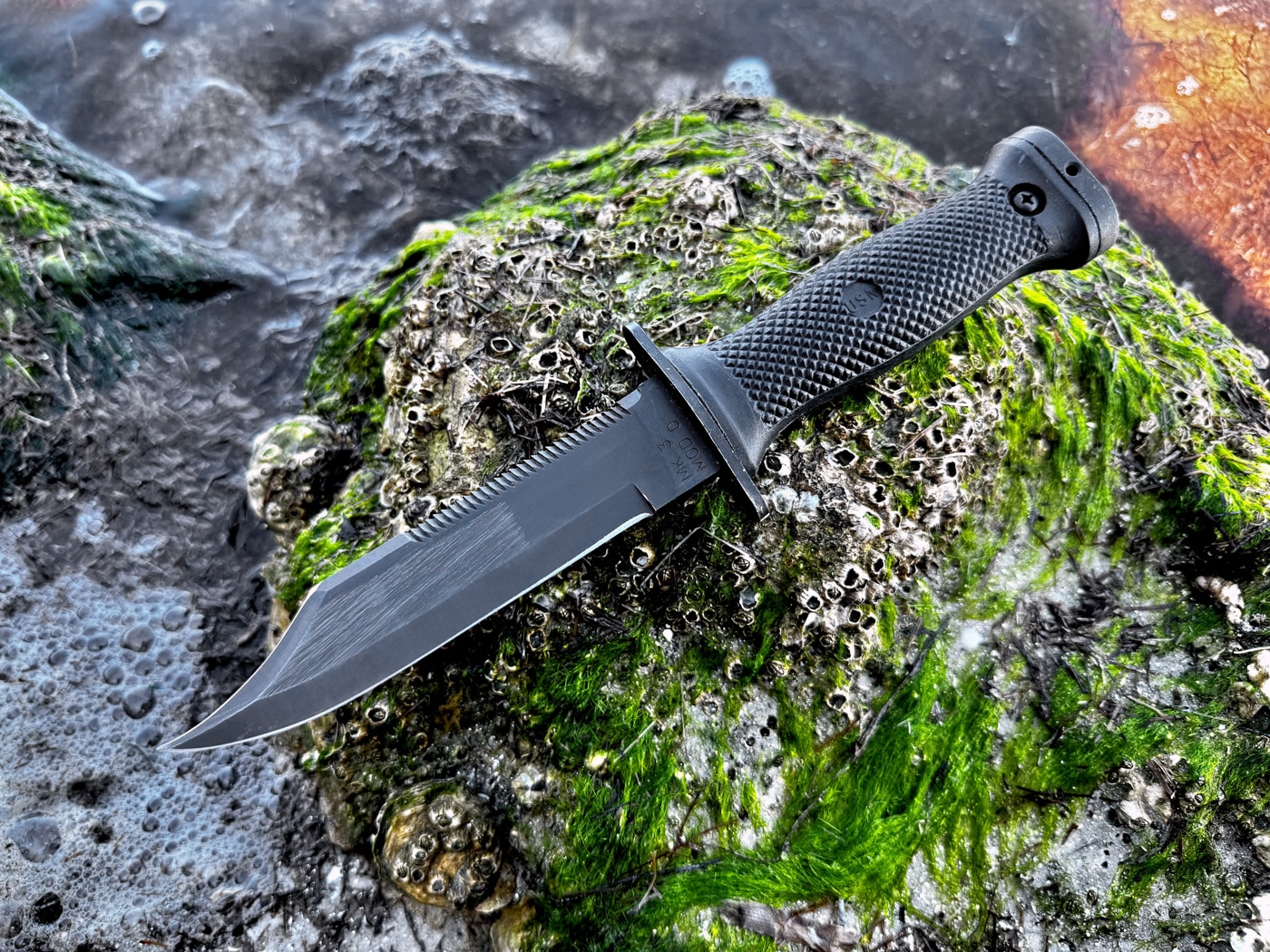
Although it has an aggressive appearance, the U.S. Navy’s Mark 3 dive knife was a working tool first.
The preliminary knives went to Naval personnel, notably the SEALs, for testing and evaluation in 1980.
The Deck Knife was intended for normal working chores.
The MK 2 was a combat knife with survival potential.
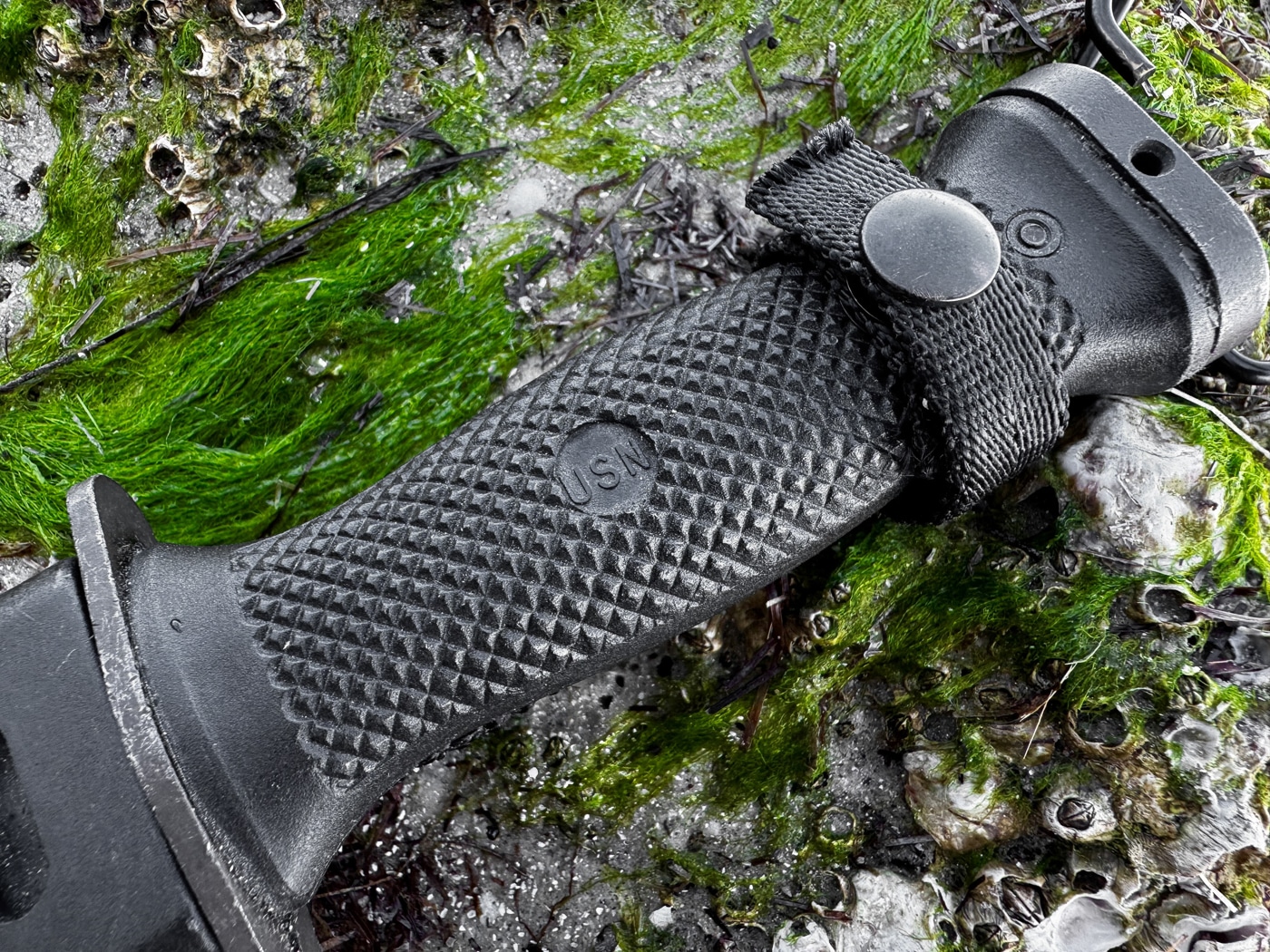
The thermoplastic handles of the MK 3 MOD 0 knife were marked with a simple “USN” for “United States Navy”.
Neither of these knives were ideal for undersea maritime operations.
The same went for the early leather sheaths.
Later sheaths would be upgraded with canvas and fiberglass.
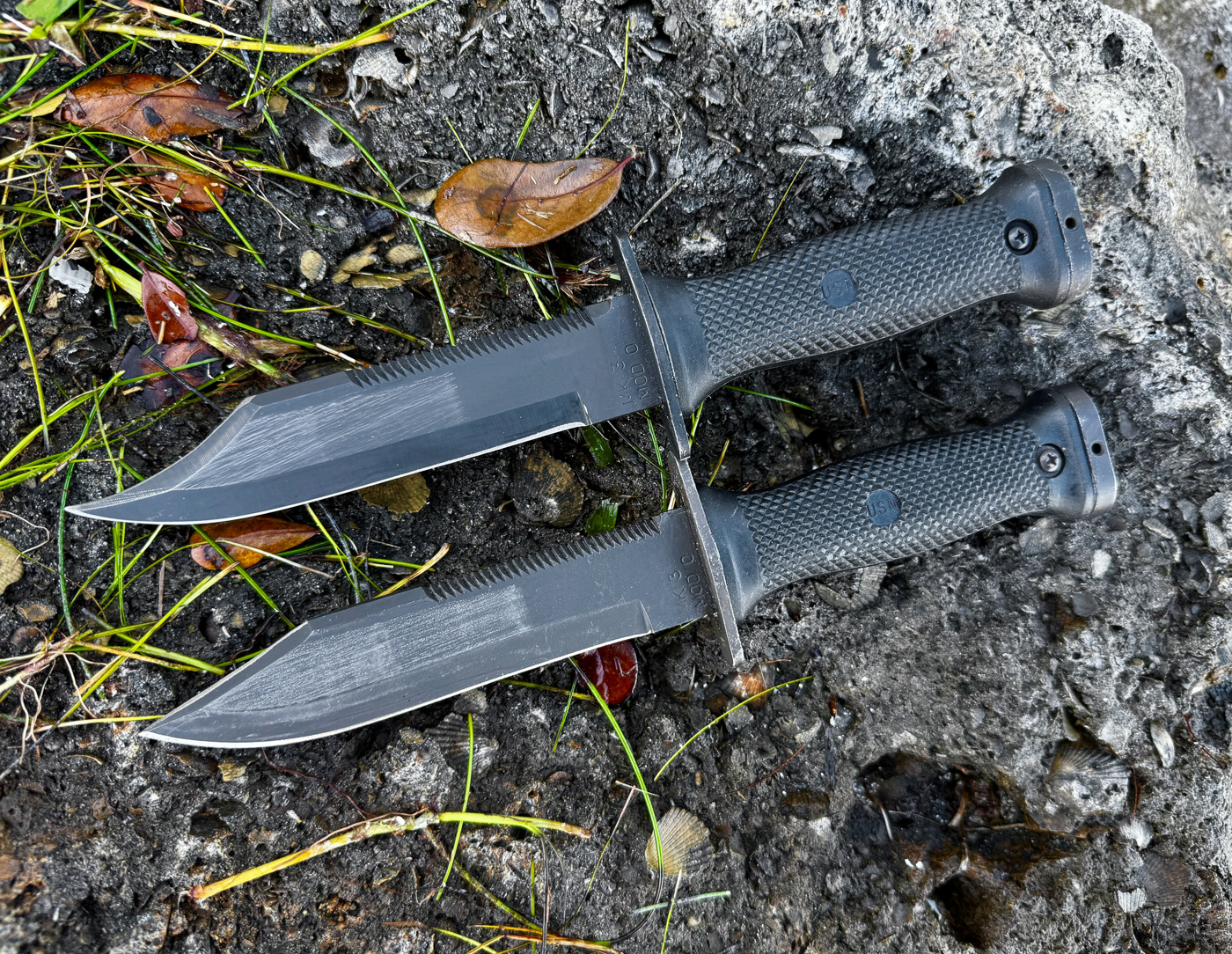
Two versions of the Mark 3 knife were made. The top knife had a pronounced curve and thin stock at the tip, which made it easy to snap off. The bottom knife was the updated version with improved prying strength.
Note that there is no nod to fighting or combat there.
This tool was envisioned to return to utility with the possibility for defense.
Its design would focus on several attributes.
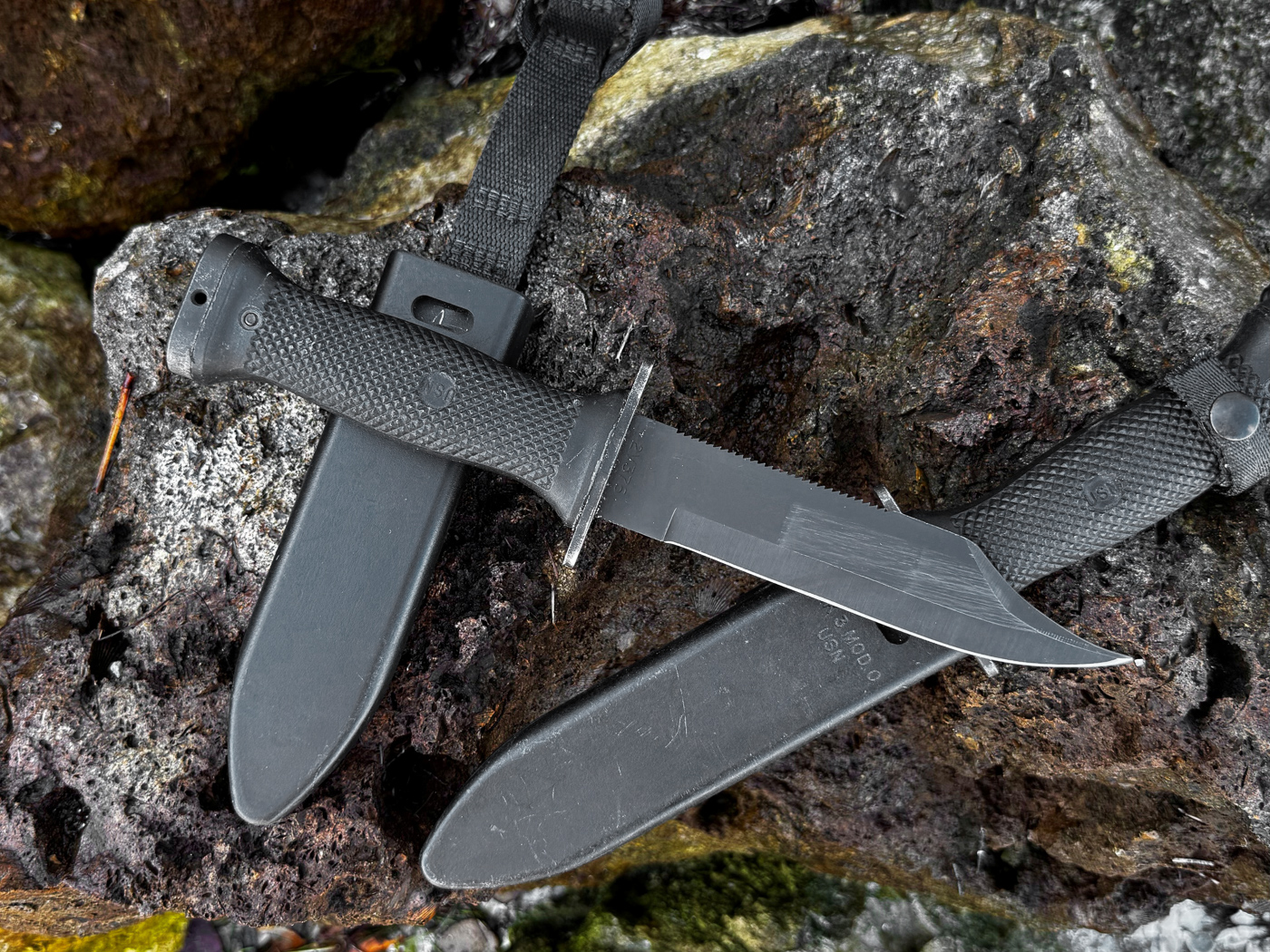
Unlike the Mark 1 and Mark 2 knives, the Mark 3 knife eliminated the use of leather and canvas. This increased the durability of the sheath and knife in a dive environment.
The Details
First off was an anti-corrosion steel.
The MK 1 and 2 had blades of high-carbon steel that would rust easily in the ocean.
The new MK 3 MOD 0 was specd for stainless steel.
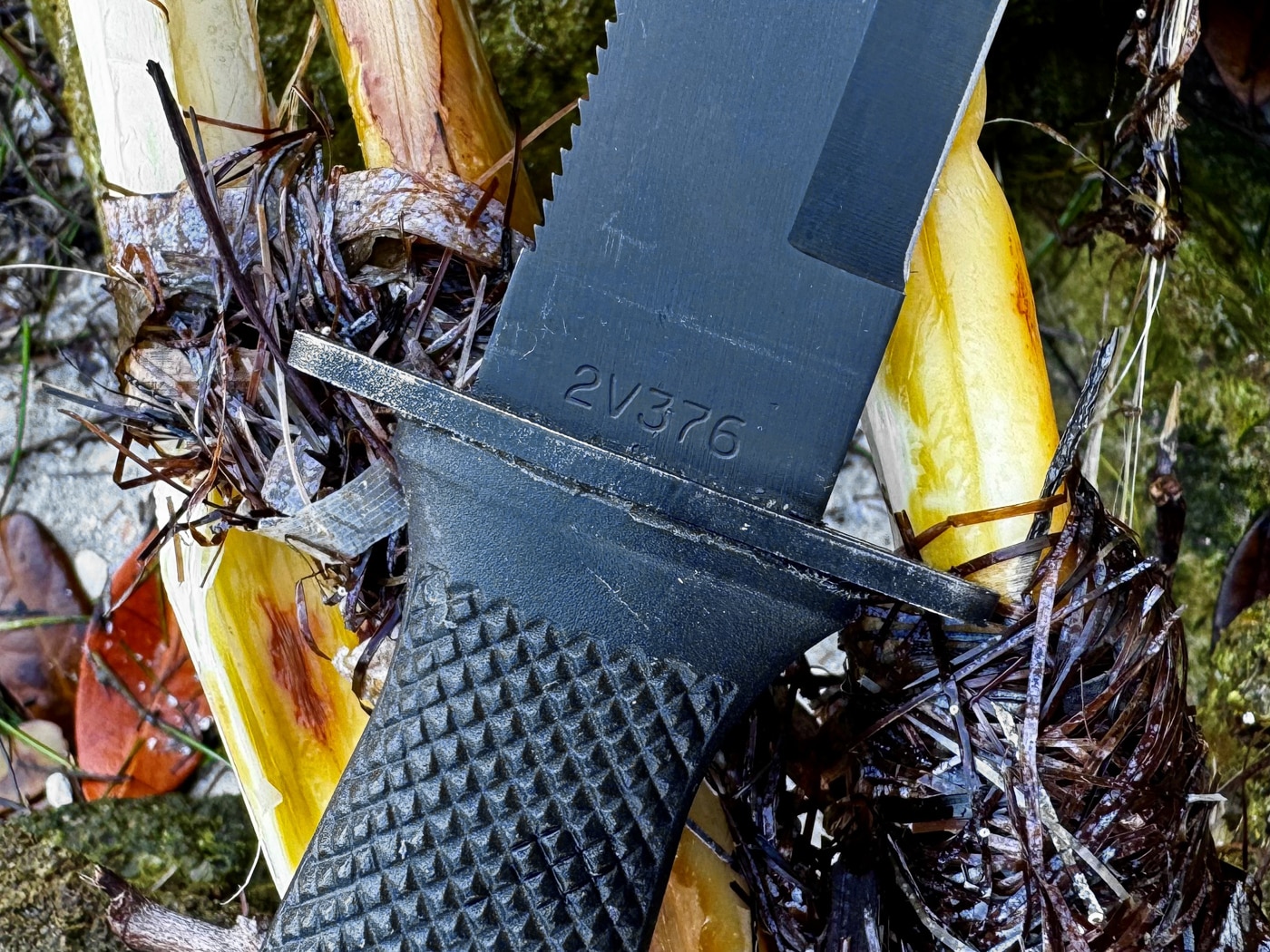
The 2V376 marking is not the designation of a steel type. Instead, it is the CAGE number used by the U.S. government to identify the manufacturer, Ontario Knife Company.
Yes, 440C has better edge-holding abilities, but the lesser 440A is easily sharpened and tough.
It was given the hardness of a softer 49 to 54 HRC.
For a diving and survival knife, this milder stainless would suffice.
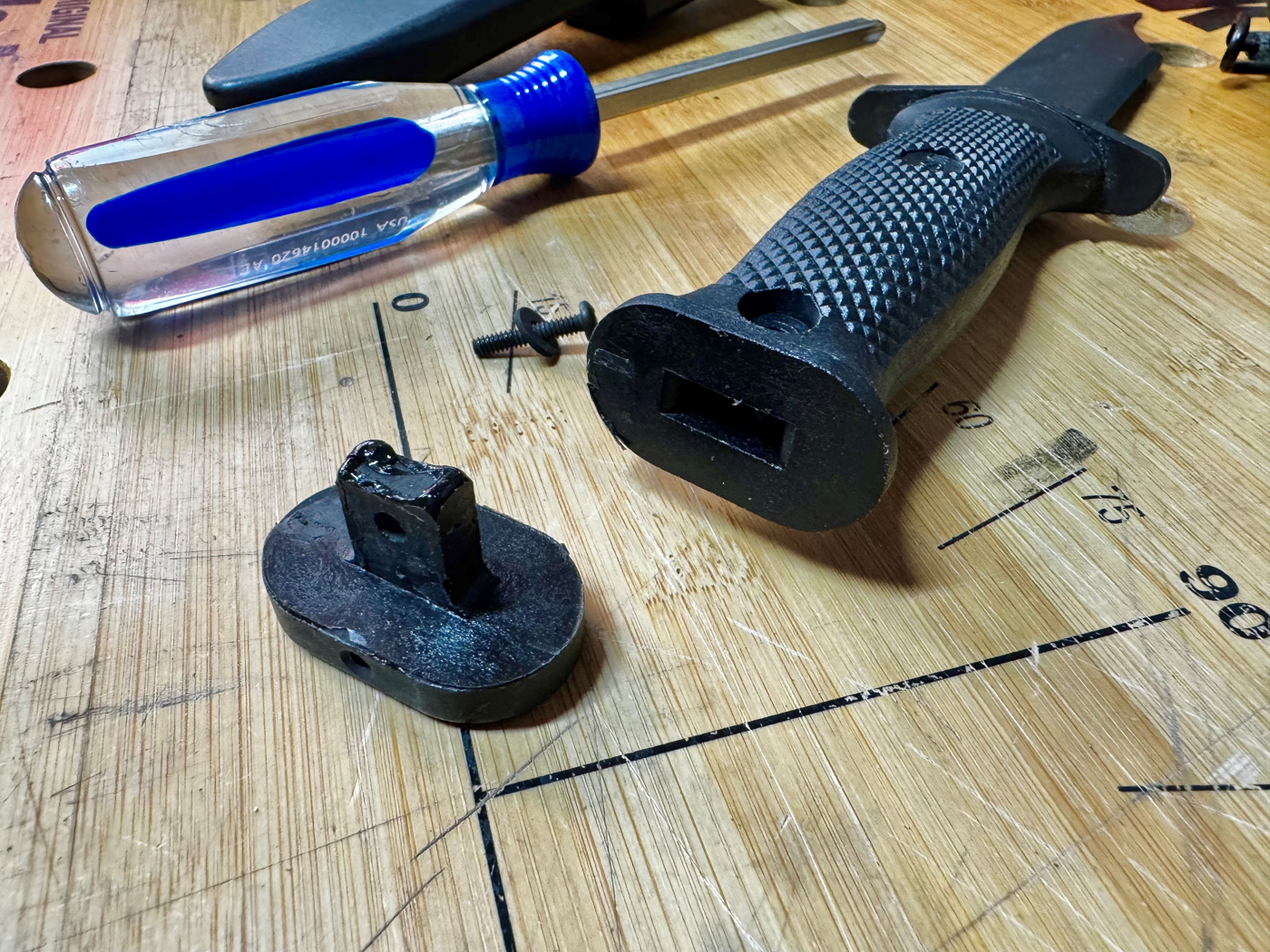
Ontario Knife Company used a partial tang and removable pommel combined with a polyamide nylon handle to offer shock and electrical resistance to the user.
The low flat grind of the 6 blade suggests a generally sharpened pry bar.
At the front, the blades clip was upswept for piercing.
There are two types of blade shapes in the MK 3.
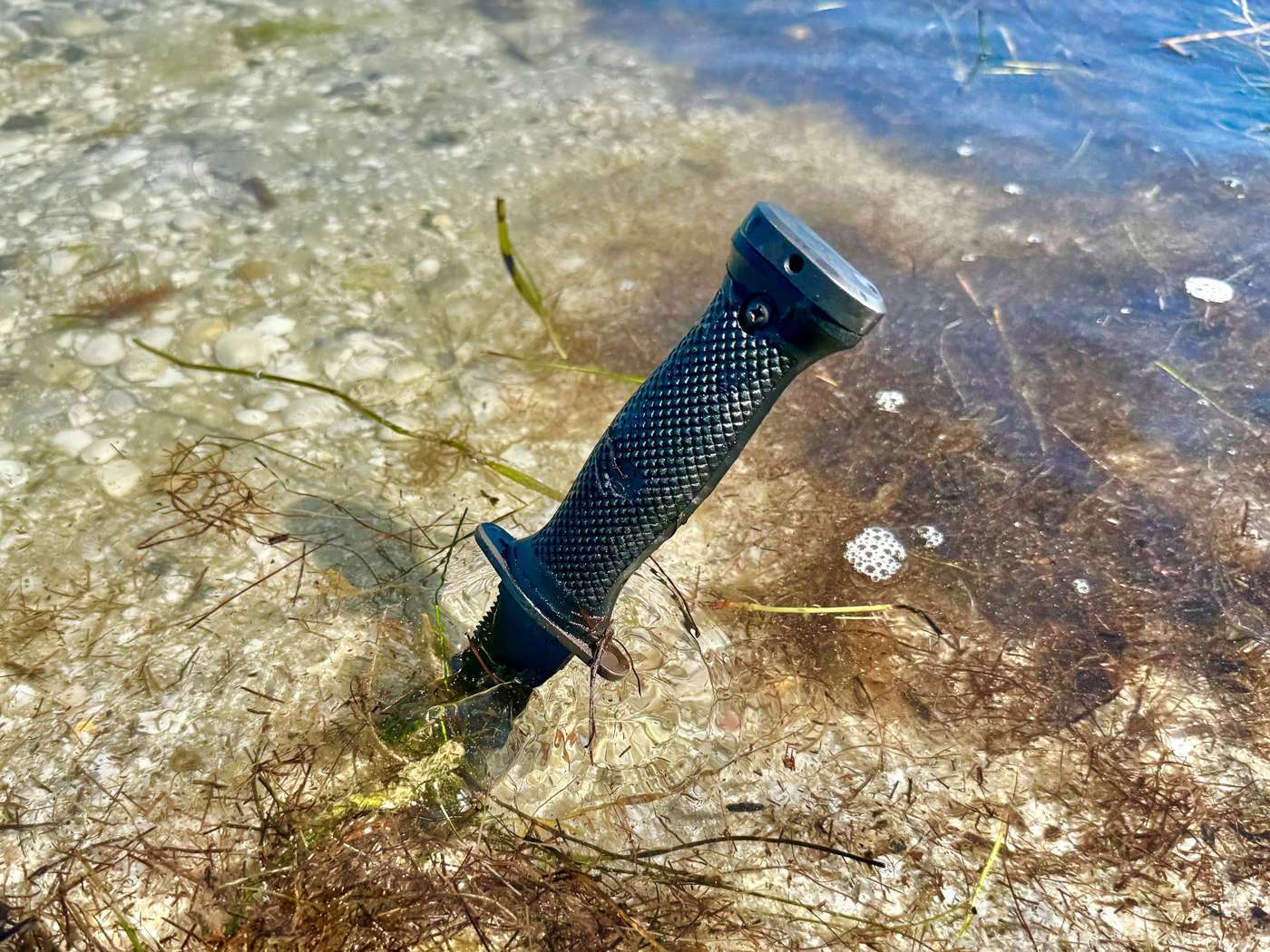
The MK 3 MOD 0 knife was a work tool designed for use in and around salt water. The material choices reflect that mission.
The original knife had a very pronounced curve and thin stock at the tip.
Sailors complained it was easily snapped off.
Despite early input, the profile was not changed by OKC until the late 1990s.
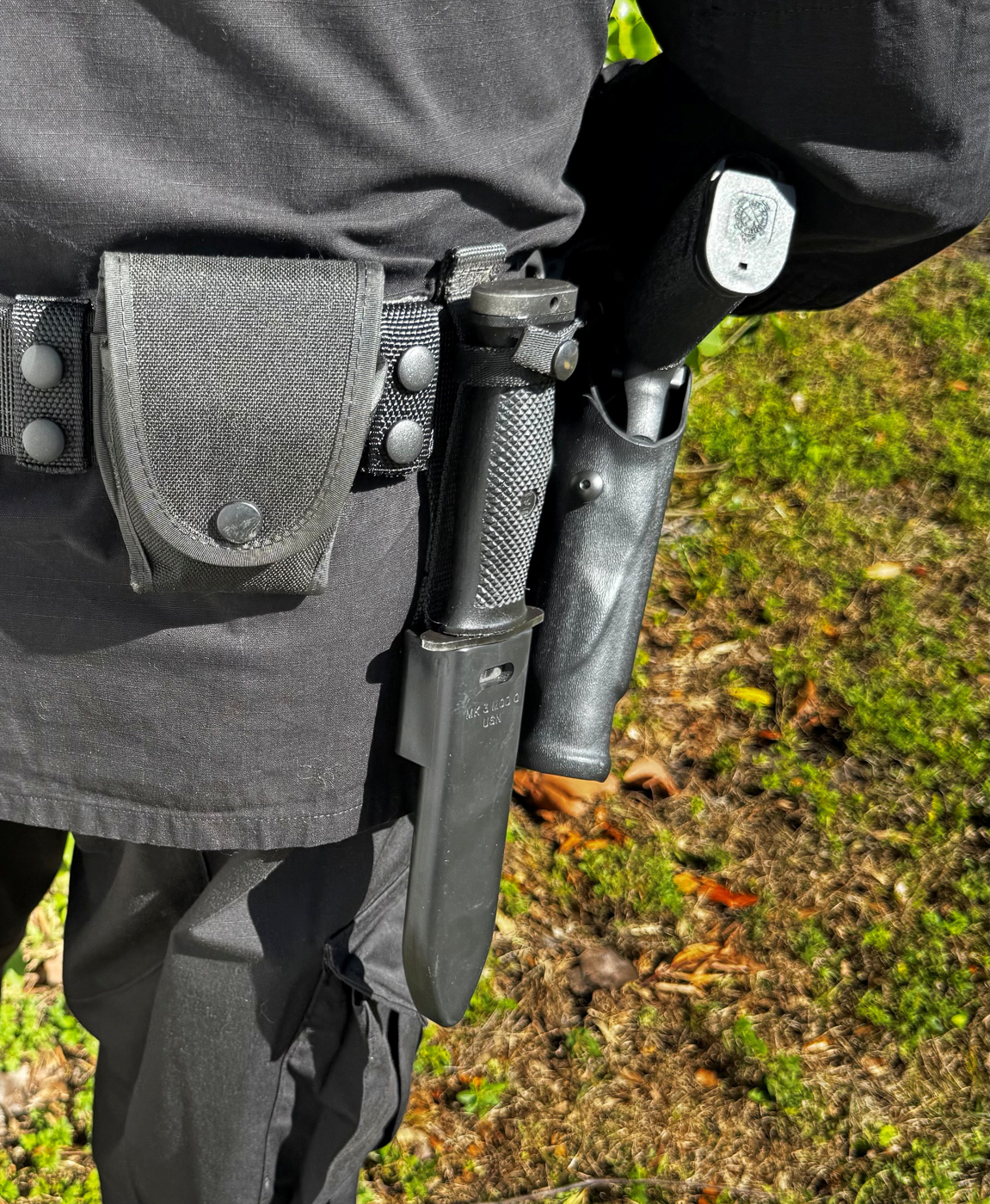
The same features that made the Mark 3 a suitable tool for the Navy SEALs also lend themselves well to use by SWAT teams. It’s primary intent is not that of a weapon but as a tool in unpredictable environments.
The new flat clip point was stronger.
A black oxide coating protects the steel.
A saw rides on the top of the blade.
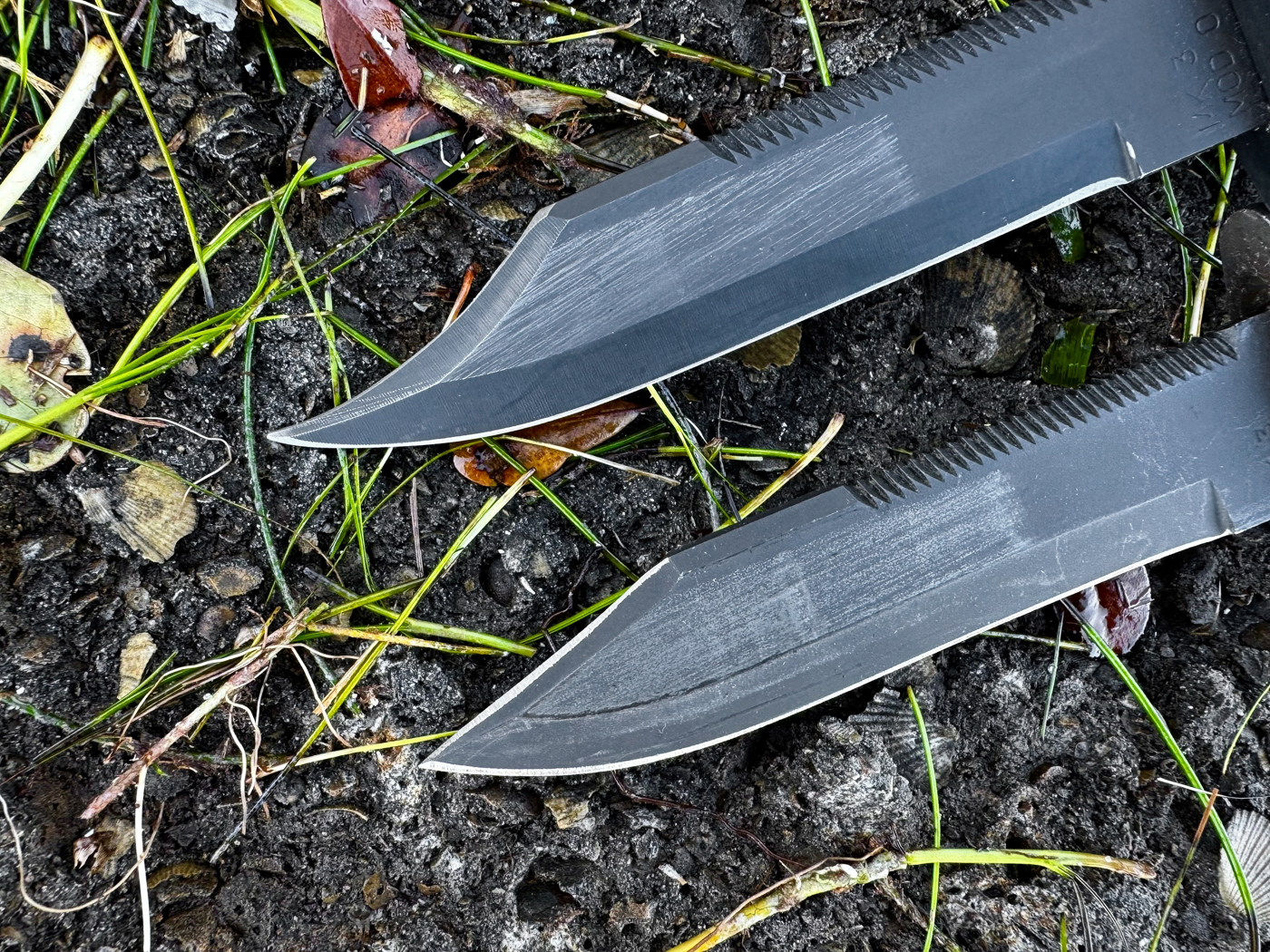
Although the MOD 0 designation was never changed, there were distinct Mark 3 knife blade differences. In this photo, the top blade was the original design while the lower blade was the updated variant.
Some have said it is not good for cutting wood, and thats probably fair.
The thickness of the blade would interfere with any deep cuts.
The tang is not connected to the steel pommel.
It is a hidden feature with a hidden agenda.
The handle has a cavity pocket on the end that the Pommel tang inserts into.
The pommel is attached by a cross screw that secures it to the handle.
So, the thermoplastic handle insulates the operators hand if a live wire is severed.
The hefty steel pommel can still be used for hammering, but cannot conduct electricity.
An ingenious feature of the build.
Just a part of the MK 3 being seen as a working tool.
Packing It In
A heavy-duty, high-impact plastic sheath carries the MK 3.
The markings MK 3 MOD 0 and USN adorn the upper front of the sheath.
It has a metal collar and inner retainers that hold the knife quite vigorously.
The sheath hangs from a nylon strap that has a snapped loop to secure the knife handle.
The brass hanger can be removed and the sheath mounted on a standard belt.
The MK 3 could also be affixed to a buoyancy compensator or strapped to a divers leg.
All laudable qualities in a Navy knife.
But most of these knives would not see service past graduation.
In my collection, I have a MK 3 original clip point and a MK 3 modified clip.
My SWAT teams coordinator procured them for us to wear on our pistol belts in the mid-1990s.
Back then, we did not wear upgraded plate armor.
It was a gun belt, soft body armor and thin nylon load-bearing vest for gear.
A weighty knife on that old-style kit was no sweat.
The MK 3s blade steel was problematic.
Sharpens well, dulls well are not the best qualities in a knife, especially one deploying into danger.
At issue, too, was the fragile point of the early knives.
If it easily breaks, its no good for the mission.
Modern SEALs have been free to carry personally purchased blades.
It should undoubtedly be mentioned in any listing of the gear that real operators were issued.
It had a National Stocking Number with the U.S. government to prove it.
Sadly, the Ontario Knife Company was sold in August of 2023.
The company that purchased it has shuttered all operations.
OKC had been in business since 1889. nudge the Go To Forum Thread link below to jump in!




